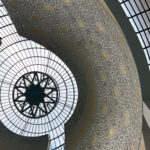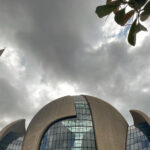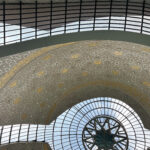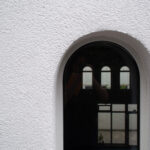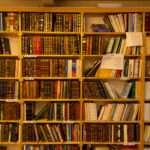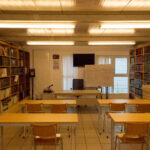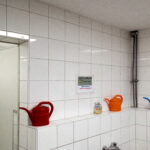Cologne
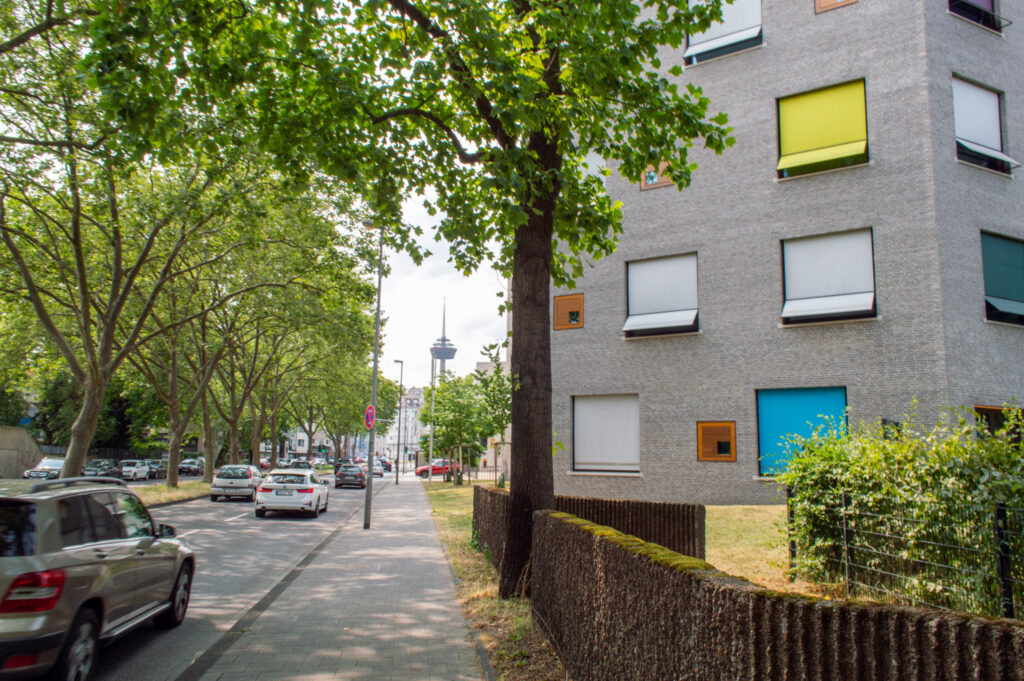
At it’s root, this research project is concerned with architecture, the intricate play of mass and void, light and shadow, the poesis of space–and so forth and so forth. My research usually took me to buildings that weren’t intended for the community they were serving, a repurposed architecture where form was something to be dealt with. These were the buildings that interested me most, but by this point I recognized that I needed to cast a wide net given my short stays. Cologne presented me with the first building I visited directly commissioned by a religious organization, the Zentralmoschee. Paul Böhm, son of famed Pritzker winner Gottfried Böhm, took on the challenge of designing Germany’s largest mosque for the Turkish-Islamic Union for Religious Affairs. His curving and expressionistic design has become a landmark in a city know for its shall we say haphazard architectural typologies (1).
After seeing images of the Central Mosque online, I had mixed expectations. The shape reminded of those shampoo bottles common in the mid 2000s and the glazing which curves across the facade seemed clumsy. I set off to see the Central Mosque and form new opinions my first day in the city. The site lies on the edge of Ehrenfeld, the trendy neighborhood lying outside Cologne’s central ring. The mosque’s minarets can be seen piercing the sky from blocks away, echoing the nearby Colonius Tower. Seated on a corner, the Central Mosque is broken up into a shopping plaza on the ground floor (complete with a Halal food court), offices for various groups and organizations, libraries, and the masjid itself. More than just a worship space, it is a center for Cologne’s large Turkish community.
I had filled out some document online months prior and was under the impression I had scheduled a guided tour. I was wrong. A nice young woman gives me a pamphlet and says I’m free to explore so long as I don’t take photos with a camera.
Cologne’s Central Mosque must be understood through the masjid, whose formal logic dictates all the other spaces on the site. The other buildings are well-designed contemporary structures hold down a grooving chord progression while the masjid solos. Walking into the masjid, the entrance is lined with hundreds of cubbies, each safeguarding your shoes with a digital lock. From there I enter the prayer hall. The building finally makes sense in this space. A huge quasi-dome floats high above the light blue carpet, splitting apart at points to let in sunlight. These long curving windows cast intricate shadows that appear and disappear by the minute as clouds roll overhead. A large geometric star completely surrounded by glazing lies at the center of the roof, opening up what the dome like a pistachio. I’d been to a handful of fancy cathedrals so far, but none were able to defy gravity the way modern steel does. It truly is an awe inspiring interior.
I sat and marveled and took photos alongside other tourists. A man to my right took what appeared to be a new Facebook profile picture while some college kids in what seemed like a Muslim youth group to my left wrestled each other. A girl in their group looked on and laughed. Really positive energy all around. As I exited, a group of elderly folks in wheelchairs had assembled, seemingly for a guided tour. I sat to draw trying in vain to capture the curves which from the outside seem a bit awkward but from the inside create a singularly moving space.
1: The city was all but destroyed in WWII, and the rebuilding process was presumably less interested in aesthetics than it was in housing people.
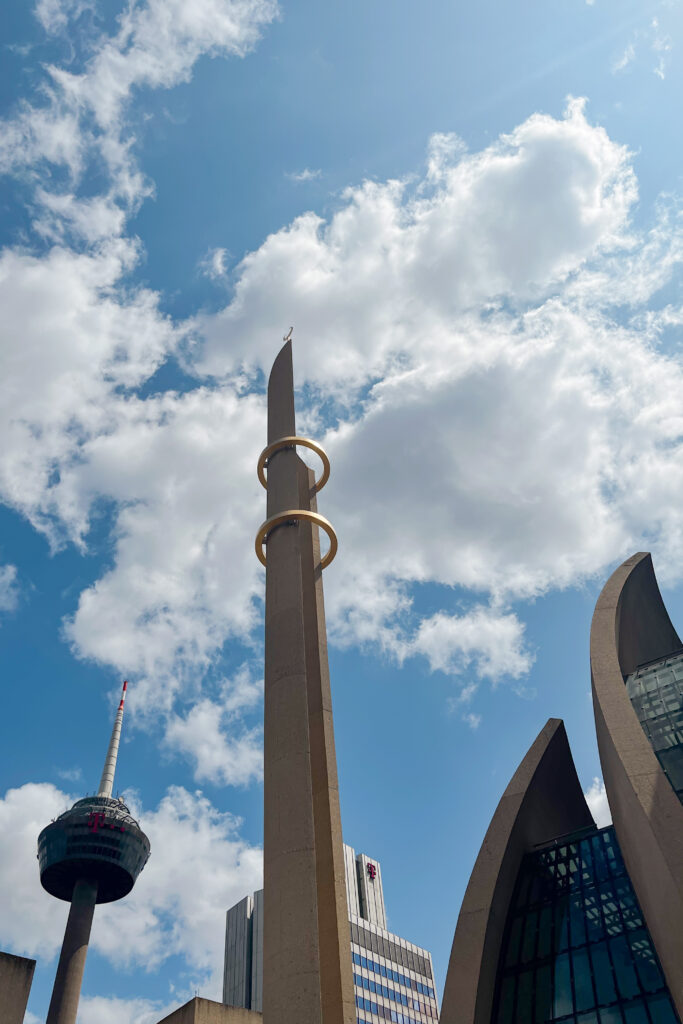
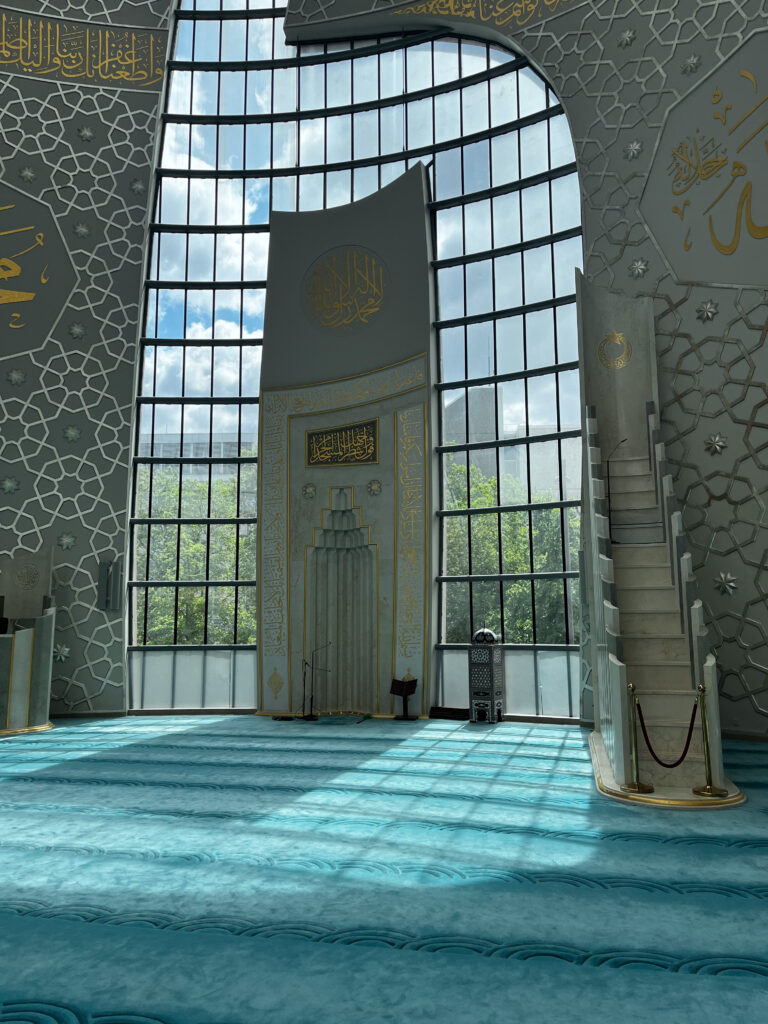
Some days later I visit the Abu Bakr Mosque, a humble space that feels like an intimate community gathering space. As I approach, a group of young men sit outside talking and laughing. They see me with my camera and tell me that I can wait for the imam inside. I was expecting to meet an old man with a white beard but was instead greeted by a cheerful man in his twenties. Adnan, the imam, had also asked a member of the mosque to stay and help with translating although his English was by all accounts perfect. They took me to see the various rooms which comprise the mosque. There are classrooms both for kids and adults, a basement where people do wudu, or ablution, before praying, and a library that is in many ways the cornerstone of the mosque.
Adnan explains that this mosque was born from the efforts of one pious man, Metwaly Mousa. Around 35 to 40 years ago, Mr. Mousa decided to call up everyone in the local phone book with a Muslim looking name and asked them if they wanted to build a mosque. A group formed and acquired a meeting space. Mr. Mousa began to fill it with his extensive religious library, the books of which still form a major part of the mosque’s library today.
I learn that a lot of Turkish laborers were given visas to come and rebuild Germany after WWII. Images of the razed city line every tourist shop, so I was aware of how gnarly the devastation had been, but hadn’t stopped to think who actually rebuilt everything. These days there are more third and fourth generation Turks, evident by the ever present doner kebab restaurants. Today, Abu Bakr hosts around forty to fifty people for prayers and up to 500 during Ramadan. They are a robust and growing group, attracting a lot of young people in the area (of the dozen or so people I saw, everyone was under thirty).
On my way back I stop one final time at what is undoubtedly the city’s most famous building, the Cologne Cathedral. This drizzly afternoon is the city’s Pride parade and the streets are filled with dancing. The auto-tuned sounds of Cher’s “Believe” echo through the air, and I stand watching crowds move around the famed cathedral. There is something deeply moving about the dozens of rainbow flags waving around the Gothic might of this cathedral. For a moment I stop to consider the shock and awe which such a sight would have elicited just a few decades ago. I snap some photos and walk to get some doner.

